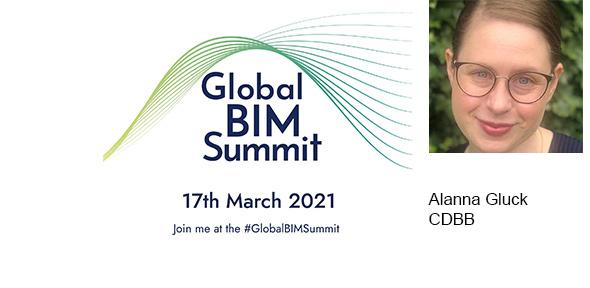
Submitted by Angela Walters on Mon, 15/03/2021 - 10:51
In the last of our Global Collaboration blog series, CDBB’s Policy and Public Affairs Manager Alanna Gluck shares her reflections on the Global BIM Summit pre-event series, and why the time is right to establish a global network for the built environment for and by the public sector.
Governments all over the world are implementing national digitalisation strategies to deliver more sustainable, efficient and cost-effective infrastructure. Building Information Modelling (BIM) is at the heart of this digitalisation, and provides the vital data foundations from which better decisions can be made. From legislation, to market intervention via change management and R&D investment, governments across the globe are using public policy to achieve the social, economic and environmental benefits that BIM delivers for people and places.
During the recent Global BIM Summit pre-event series, we heard from government officials and multi-lateral representatives leading BIM initiatives across the world about the policy goals of their BIM programmes. BIM was discussed as a critical enabler in achieving these goals, and international collaboration was credited for enabling the greater benefits of BIM to be realised across countries and regions. While each nation and organisation has their own approach to BIM, several common themes emerged, demonstrating why now is the time to create a shared vision for the global built environment.
International alignment: improving productivity of the construction sector through open standards
Infrastructure and construction is a global business, and all countries face common challenges which BIM can address. Productivity gains from the standardisation of the BIM process through alignment with international standards, including the ISO-19650 series, was highlighted by all countries participating in the pre-event series. A common language to describe the built environment was stated as a critical enabler for information exchange across the infrastructure asset lifecycle. A common language based on standards was supported as an important factor in achieving better decision making by the public sector. A standards-based approach has already helped countries to save public money, reduce carbon emissions and improve health and safety outcomes.
People matter: human capital as a critical enabler
Achieving the global goals of combating climate change and recovering from the economic impacts of Covid19 is facilitated through better information management, but this is only part of the equation. In order for the benefits of BIM to be realised, investment in human capital must be strengthened across the global construction sector. All countries in the pre-event series spoke about the need to fundamentally shift how people work, and how to enable knowledge management and sharing. Evidence-based decision making, enabled by BIM, is seen as a mechanism to increase transparency and to build trust between governments and the public.
BIM: the foundation of the future built environment
Across the pre-event series, speakers emphasised BIM as a critical enabler of the future. BIM is already viewed across the globe as integral to the development and delivery of more efficient and sustainable infrastructure. National governments and organisations view BIM as the necessary foundation from which more advanced digital technologies and processes can be implemented. Digital advancement of the public sector will unlock the greater value of data, providing meaningful insight into the social, economic and environmental impacts of the built environment. It will allow governments to make better use of public funds and ensure that infrastructure benefits the people it serves. From job opportunities and improved public services to the creation of new economies and interconnected systems, better information management now through BIM is a cornerstone of the global built environment’s digital ambitions.
BIM benefits for people and places
The Global BIM Network will be formally launched at the Global BIM Summit on 17 March 2021. It will provide a forum for policy makers, public procurers and infrastructure investors to discuss challenges and identify solutions with colleagues around the world in a candid, straightforward manner. In establishing the Global BIM Network, governments around the world will be able to share lessons learnt, tackle challenges collaboratively and co-develop the guidance, tools and evidence which will inform national and international policy on better infrastructure delivery through digital.
Together, the Global BIM Network will foster a more productive and more collaborative global digital construction sector for the public good. By increasing the capacity and capability of the public sector as client, we will encourage the global construction sector to achieve shared goals for COVID19 recovery, net-zero and environmental sustainability, and prosperity for all.
To find out how to become involved in the Global BIM Network, join us at the Global BIM Summit on 17th March 2021. For more information and to register, visit www.globalBIMSummit.org.
Alanna Gluck is Policy and Public Affairs Manager at CDBB. She is passionate about how digital built environment policy and infrastructure delivery can improve social and economic outcomes for people and places, with a special interest in the interface between the digital operation of infrastructure and improved public services, such as health and education.
